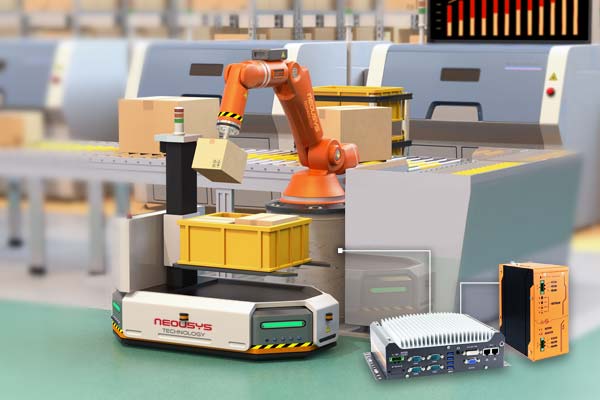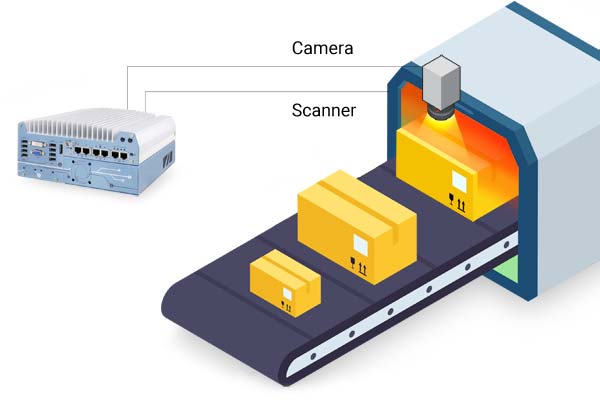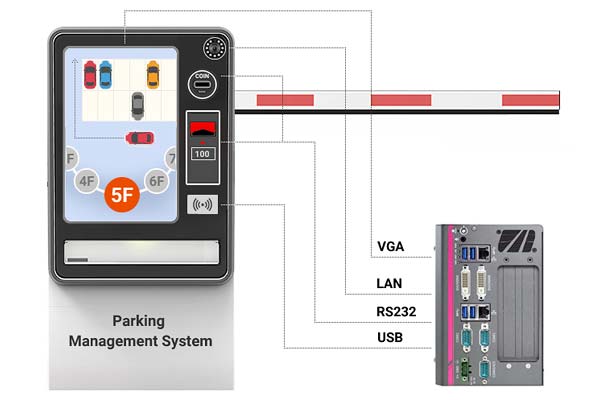What is a Neousys Fanless Computer?
Neousys Fanless Computer uses a uniquely designed heat sink and SSD storage. The CPU of fanless embedded system is situated right next to the heat sink with an extremely heat conductive material placed in between to channel the heat. While most Neousys Mini Box PCs are fanless, some may use an optional smart fan to sustain optimum temperature inside the chassis when multiple add-on cards are installed.
Neousys Mini Box PC is available as fanless embedded computers in various sizes to better suit your application needs such as embedded vision controller, mobile surveillance, GPU computing, automation and industrial facility monitoring. It features Intel® 12th-Gen Core™ i series processors with rich I/O ports and up to 5 PCIe/ PCI expansion slots. The maximum operating temperatures range from -40℃ to 70℃.
Rugged and durable, fanless with true wide temperature operation with excellent processing power make Nuvo embedded series computers the ideal choice for extreme industrial applications.
What are Benefits of the Neousys Fanless Computer?
Fanless Computer vs. Traditional IPC
Neousys Fanless Computer features low power consumption electronic components and can function with 100% CPU load under wide temperature conditions (maximum temperatures ranging from -40°C to 70°C), it is the ideal solution for industrial environments.
| Item | Nuvo Fanless Computer | IPC | |
|---|---|---|---|
| SBC | ATX | ||
| Front-side I/O | Y | N | N |
| Fanless | Y | N | N |
| Slot | 2 / 5 | 1 to 20 | 5 |
| Rack | Y | Y | Y |
| Power input | 8 to 35V DC | 110V/220V AC | 110V/220V AC |
| Temp. | -40℃ to 70℃ | 0℃ to 50℃ | 0℃ to 50℃ |
| Price | $$ | $$$ | $$ |
CPU Performance vs Ambient Temperature
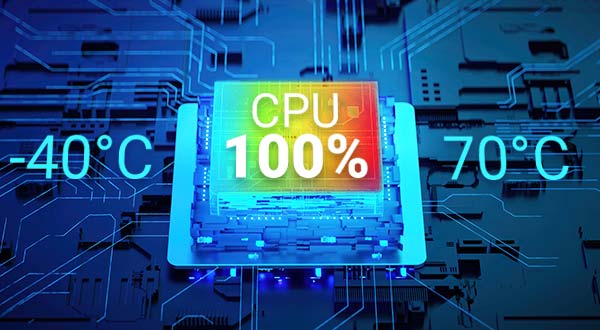
Tested and proven, Neousys Box PC in fanless embedded system can perform under 100% CPU load consistently in wide temperature operating settings.It has:
- Advantages over SBC & ATX systems
- Lower internal chassis temperature for add-on cards
- Quiet operation and enhanced system durability
New GPU vs Previous Generations

The new GPU offers significant performance improvement while Neousys Fanless Computer design provides efficient heat dissipation for steady GPU performance in embedded system.
New Horizon for Industrial Computer
Neousys Fanless Computer is designed as a rugged embedded system but it also has the same level of expandability as most IPCs, thus offering greater application flexibility for Industry 4.0 and Internet of Things.
What's New in Fanless Computers' Design?
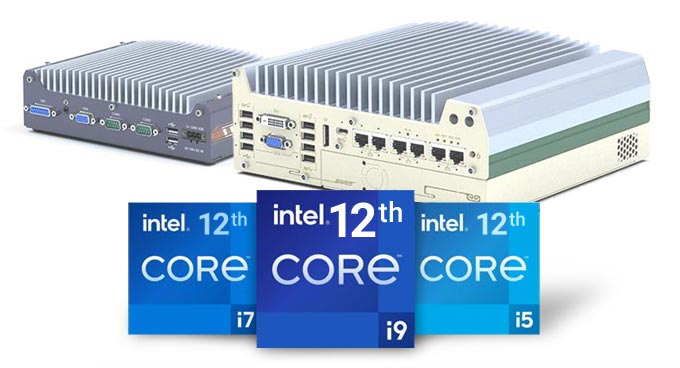
The latest Intel® Core™ i fanless computing platform
Powered by Intel® 12th-Gen Core™ i processors with up to 16-core/ 24 thread architecture that offer outstanding performance improvement over previous Generation platforms for emerging high-end IPC market in a compact fanless chassis.
Rackmount and Front Panel I/O Design
The Neousys Fanless Box PC can be rackmounted and it incorporates cutting-edge computer I/O such as Gigabit Ethernet ports, USB 3.1 Gen2 with up to 10 Gbps throughput, PCI/ PCIe slots, COM ports, DVI-D, audio connections and M.2 2280 M key socket for NVMe SSD.

Expansion Cassette / Expansion Slots for add-on cards
Neousys Fanless Box PC features five PCI/ PCIe expansion slots, it offers the same level of expandability as most industrial-grade computers (IPC).
- Increased I/O capability
- Flexible system application
- Install PCIe/PCI cards to better suit your application platform
Applications
